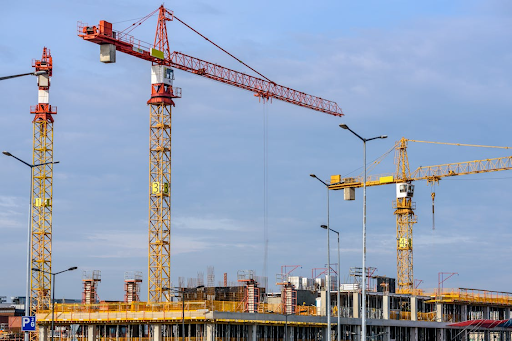When you tidy up your living room, suddenly the clutter doesn’t feel as heavy. You can think clearly, you know where things are, and you move with purpose. The same principle applies to building sites. When information is neat, organised, and accessible, decisions become easier, and stress levels drop for everyone involved.
In construction, the mess often isn’t physical at all. It comes from uncertainty, delays, and second-guessing about whether concrete has cured enough, or whether the mix is holding up as expected. That’s where smart tools like concrete data sensors are changing the game. By transforming raw information into something that feels orderly and actionable, they give teams a chance to strike formwork sooner, reduce costly hold-ups, and cut through the chaos with confidence.
Photo by Jiyoung Kim
Why Information Matters as Much as Materials
You can stack materials in neat piles, but if the information behind them is vague, the job still feels overwhelming. For decades, construction teams relied on lab testing or rule-of-thumb scheduling to figure out when it was safe to move forward. While that worked to a point, it created unnecessary waiting, waste, and sometimes risk.
Think of it like cooking without a recipe. You may end up with a decent dish, but there’s a chance it takes longer, uses more ingredients than needed, or simply doesn’t come out right. Clear data in construction is like having the recipe in front of you. It’s precise, repeatable, and reassuring.
From Piles of Numbers to Actionable Insights
Raw data on its own isn’t helpful. Just like a cluttered drawer, numbers without context can be frustrating. What makes a difference is how that data is presented and understood. AI-driven platforms are stepping in here, turning temperature readings and strength measurements into meaningful insights.
Instead of trying to make sense of spreadsheets or chasing results from a lab, teams now see an easy-to-read dashboard. That shift doesn’t just save time. It frees up mental space. Workers on site can focus on safety, efficiency, and finishing tasks on time rather than chasing information.
Cutting Carbon Through Smarter Choices
Construction is one of the largest contributors to global emissions. A lot of that footprint comes from concrete, which is energy-intensive to produce. Having clear insights into how concrete performs allows builders to adjust mixes, reduce excess cement use, and still meet safety requirements.
This is where tidy data has a ripple effect. When you reduce waste and unnecessary overdesign, you also cut costs and emissions. It’s the same satisfaction as decluttering your home and realising you don’t need to buy more storage boxes. The solution was in using what you had, more efficiently.
Safety and Calm Go Hand in Hand
On a busy site, nothing raises anxiety like uncertainty. Is the concrete strong enough? Is it safe to remove supports? Without solid answers, teams often err on the side of waiting too long. While cautious, it drains both time and money.
Real-time insights calm those nerves. When you can see strength development tracked hour by hour, decisions shift from guessing to knowing. The result is a site that feels more orderly, with less last-minute scrambling. It’s the kind of calm that mirrors the feeling of walking into a tidy home after a long day.
The Human Side of Data
Data might sound cold, but the way it’s used has a very human impact. Less waiting around means fewer long shifts wasted. Reduced errors mean less stress for managers and workers alike. Projects that finish on time or even early strengthen trust between contractors and clients.
In a way, the true benefit of AI-driven insights is not the technology itself, but the breathing room it gives people. Just as tidying your personal space improves your mood, tidying the flow of information improves the way a team feels and performs together.
A More Mindful Approach to Building
It’s easy to think of construction as an industry where speed and strength are the only priorities. Yet the rise of smarter tools shows a shift toward mindfulness as well. Builders are now considering not just deadlines but sustainability, efficiency, and the overall well-being of their teams.
Taking a mindful approach doesn’t mean slowing down. It means being intentional. Every pour, every strike, and every decision is made with confidence because the data is clear and accessible. That intentionality brings order to what has always been a high-pressure environment.
Practical Benefits Builders Notice
To put the advantages into context, here are some of the clear benefits teams see when using real-time concrete insights:
- Reduced waiting time: Less downtime while concrete cures means projects move forward sooner.
- Improved sustainability: Smarter use of materials helps lower emissions.
- Better collaboration: Shared dashboards keep everyone—from managers to site workers—on the same page.
- Increased safety: Clear data reduces the risk of premature decisions.
These aren’t abstract wins. They’re practical improvements that save money and improve morale on site.
Bringing Order to a Complex Industry
Construction will never be as calm as folding laundry or clearing out a drawer, but it doesn’t need to feel chaotic either. By leaning on data that is clear, organised, and easy to use, builders can bring a little order to an industry known for its complexity.
AI-powered platforms like ConcreteDNA show that the future of construction isn’t just about stronger materials, but about smarter processes. Tidy data makes for tidy sites, and tidy sites lead to calmer, safer, and more sustainable projects.
Photo by AS Photography
Conclusion
At its core, this is about clarity. Whether in our homes or on our building sites, clutter clouds judgment, while tidiness makes choices easier. By turning raw information into neat, usable insights, AI-driven tools bring construction closer to that sense of calm and control we all crave.
For builders, this means safer sites, faster timelines, and greener results. For the industry, it signals a cultural shift toward smarter, more mindful practices. And just like decluttering and organising a home, once you’ve experienced the difference, it’s hard to go back.
Want more tips on all things Lifestyle Management? Check our our main A Tidy Mind blog page.


